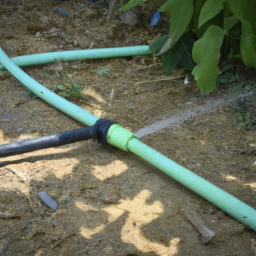How Long Soaker Hose Veg Garden
How Long To Run Soaker Hose For Vegetable Garden
1. Watering Needs for Vegetable Garden
Vegetable gardening is an activity that requires careful thought and planning in order to have successful yield. One of the key aspects that need to be considered is the watering needs for the vegetables. The amount and frequency of watering will depend on the type of vegetable, as well as the local climate and soil condition.
In general, the majority of vegetables need at least one inch of water per week, as measured by rainfall, irrigation, and natural moisture of the soil. Additionally, different vegetables have different watering requirements. Leafy greens, for instance, need more frequent watering than root vegetables. In extreme heat or in soils with low water retention, the vegetables may need more frequent watering.
2. Benefits of Soaker Hoses
Given the importance of adequate watering for successful vegetable gardening, the use of a soaker hose is one of the best solutions for this purpose. Soaker hoses are porous tubes that can be placed directly on the ground near the plants, and can release enough water slowly and at a constant rate so as to emulate the natural rainfall patterns.
In addition to their usefulness for vegetable gardens, soaker hoses have many other benefits. They are relatively inexpensive, easy to install, and do not require much maintenance. As the water is released directly to the roots, it is also more efficient compared to traditional overhead watering, and consequently, it uses less water.
3. How Long To Run Soaker Hose For Vegetable Garden?
An important factor to consider when using a soaker hose is how long it should be left on for. The length of time will depend on the size and type of plants in the garden, as well as the characteristics of the soil. Generally, for a vegetable garden, a soaker hose should be run for at least 30 minutes.
For gardens that have a lot of small, shallow-rooted plants, such as lettuce and spinach, the soaker hose should be run for a longer period of time, usually around an hour. Once the soil is sufficiently moistened, the soaker hose can be turned off. It is important to make sure that the soil is not over-watered, since this can stun plant growth and lead to rot.
4. Potential Challenges
One potential challenge when using a soaker hose is that they or the connectors can easily become blocked with dirt or debris. This can result in a loss of water pressure and reduced water flow. It is important to regularly check the soaker hose and clean off any blockages.
Furthermore, it is also important to make sure that the soaker hose is in a position that allows for optimal water flow and pressure, and the soil should be regularly checked to make sure that it is not overly saturated.
Final Word
Soaker hoses are a great way to irrigate a vegetable garden. When using one, care should be taken to ensure that the hose is regularly checked for blockages, and positioned in a way that enables optimal pressure and flow. Additionally,soaker hoses should run for at least 30 minutes for a vegetable garden, and longer for gardens with small, shallow-rooted plants. With careful attention, the use of a soaker hose can be beneficial to a successful vegetable garden.

Previous Page
